European Wasps
- Article
- European Wasps
European Wasps
Scientific Name: Vespula germanica
How to identify European Wasps
European wasps are a stout wasp with a bright yellow and black banded abdomen, and a pair of black spots on each yellow band. They have two pairs of wings with the first pair larger than the second. They have black antennae and fly with their legs held close to the body.
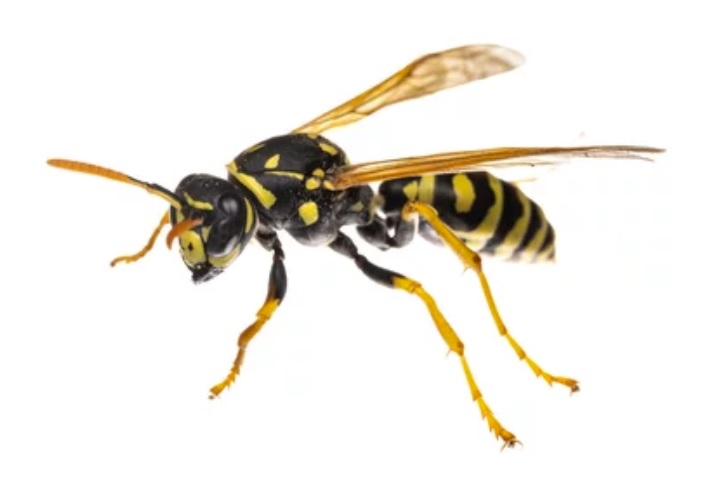
Where are European Wasps commonly found?
European wasps are found in large communal nests, normally only visible as a small entrance hole. They are normally built either underground or in cavities in walls, ceilings, logs or trees. The nests are made from chewed wood fibre and can be found in ceilings, wall cavities, logs, tree trunks and soil. They are mainly found in the Southern states of Australia and generally south of Sydney.
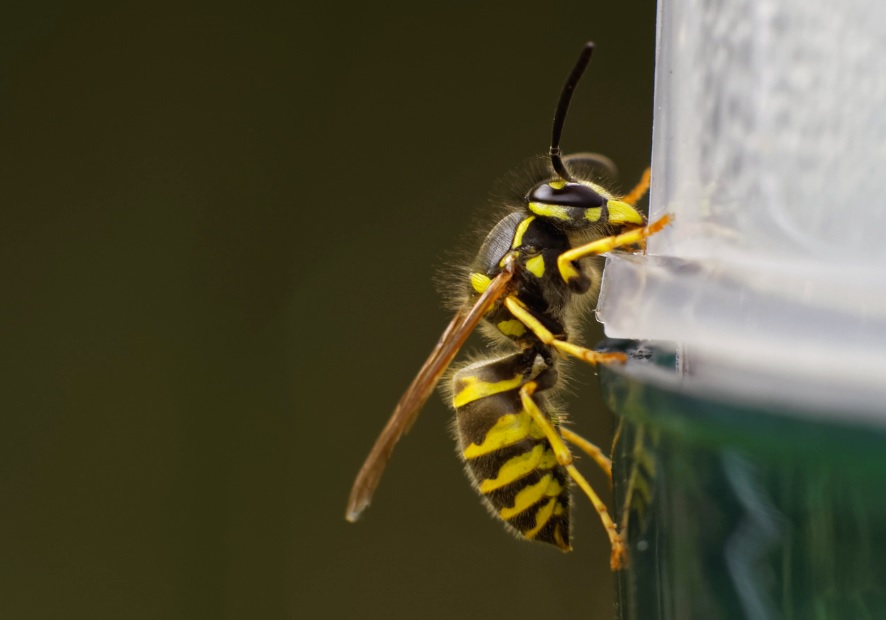
Why are European Wasps considered a pest?
European wasps are more aggressive than bees and will attack when their nests are disturbed. Unlike bees, wasps can sting more than once, and do not die after stinging. The sting causes a burning pain and swelling. If stings are multiple, a more severe systemic reaction may occur.
European wasps are a significant Agricultural pest particularly in grape growing regions of mainland Australia and Tasmania.
In some individuals, wasp, bee and ant stings can cause an allergic reaction (anaphylaxis), but this is relatively uncommon. Effective treatment is available, which involves known bee/ant/wasp sting allergy sufferers carrying a special kit when outdoors. Immunotherapy or desensitisation is also available, and can reduce the severity of the allergy. Seven deaths over a twenty-year period attributed to wasp stings have been recorded in Australia, mainly amongst known allergy sufferers who were not carrying their preventative medicine with them.
A cold pack may be used to relieve the pain of the sting. If there is evidence of a more severe reaction or the sting victim is known to be allergic to wasp and bee venom, medical attention should be sought immediately.
What is the biology and lifecycle of a European Wasp?
European wasp colonies are started in spring by a single fertilised queen, which lays an egg in a number of cells in the nest. These hatch into grub-like larvae and are tended by the queen for a number of weeks. They become the first batch of workers that take over nest construction and rearing of the larvae while the queen concentrates on laying eggs. The nest grows throughout the summer until a batch of males and new queens are hatched in the autumn. These mate and fly off to start new nests.
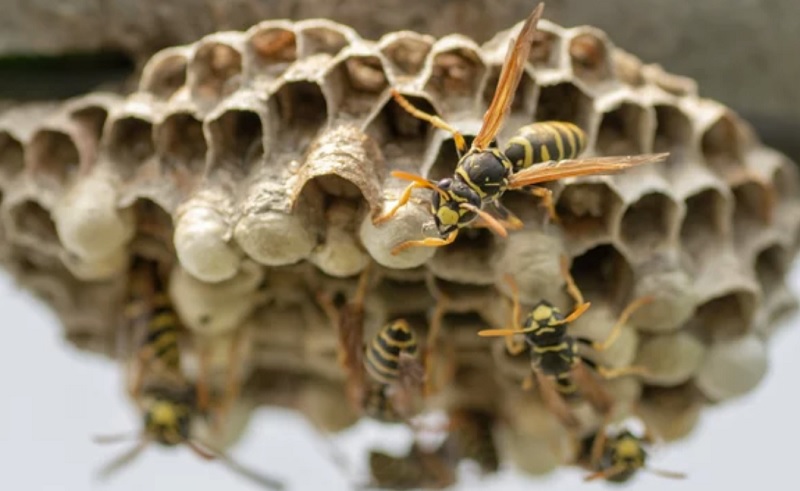
Management Tips for European Wasps
The best method of wasp control is to locate the nest, or nests, in the surrounding area and eradicate them using an insecticide registered for the purpose. It is recommended that treatment of the nest occurs early in the morning or at night when wasps are less active.
In many cases the nest will not be located. Monitoring for activity then baiting with a toxicant is now an option to eliminate a colony.
When dealing with European wasps it is important to wear protective clothing and a bee veil. Be aware that a torch/ head torch without a red filter may attract wasps. You can cover a torch’s light with red cellophane secured with a rubber band.

PRODUCT SOLUTIONS
-
 Ficam W Insecticide800g/kg Bendiocarb
Ficam W Insecticide800g/kg BendiocarbFicam W Insecticide is a non-repellent, broad-spectrum residual spray registered for the control of cockroaches, flies, spiders, fleas, ants, silverfish, bed bugs, millipedes and other insect pests.
-
 Coopex Dust Insecticidal Dusting Powder10g/kg Permethrin
Coopex Dust Insecticidal Dusting Powder10g/kg PermethrinCoopex Dust Insecticidal Dusting Powder is registered for the control of cockroaches, ants, fleas, silverfish and bed bugs in and around domestic and industrial premises, food preparation and storage areas. Also for control of mushroom flies in mushroom housing and bees in wall cavities.
-
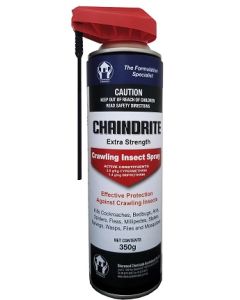 Chaindrite Extra Strength Crawling Insect Spray1.4g/kg Imiprothin and 2g/kg Cypermethrin
Chaindrite Extra Strength Crawling Insect Spray1.4g/kg Imiprothin and 2g/kg CypermethrinChaindrite Crawling Insect Spray is a new low odour oil-based professional aerosol insecticide with a powerful flush and kill effect on cockroaches. Chaindrite is an easy to apply aerosol “without the splutter”.This product is an excellent knockdown and flushing agent and has long term residual activity.
-
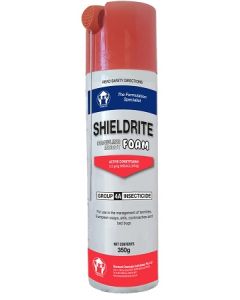 Shieldrite Crawling Insect Foam 350g0.5g/kg Imidacloprid
Shieldrite Crawling Insect Foam 350g0.5g/kg ImidaclopridShieldrite Crawling Insect Foam is a non repellent suspension concentrate formulated into a ready to use foam for the use in the management of pest insects including Termites, European wasps, Ants, Cockroaches and Bed bugs.
-
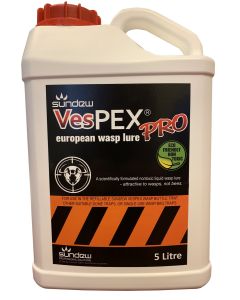 Vespex European Wasp Lure 5LNon-toxic liquid lure
Vespex European Wasp Lure 5LNon-toxic liquid lureVESPEX European Wasp Lure is a specially formulated, non-toxic liquid lure which is attractive to European Wasp (Vespula germanica), but NOT to bees. VESPEX European Wasp Lure is suitable for use in wasp dome traps, bottle traps, disposable wasp bags or other suitable traps where insects enter and are unable to escape.
-
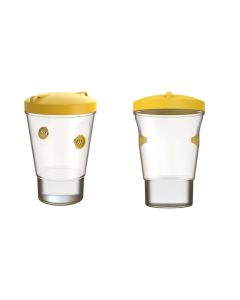 Vespex Dominator Bottle Trap
Vespex Dominator Bottle TrapThe Vespex Dominator Bottle Trap is used to monitor or directly reduce populations of insects or other arthropods by trapping individuals and killing them.
-
 Vespex European Wasp Baiting Kit
Vespex European Wasp Baiting KitThe Vespex European wasp baiting kit contains all the essential components in order to remote bait European wasp nest when the nests are unable to be located and directly treated with chemicals.
-
 Ensnare Pro 50SC Insecticide 1L50g/L Indoxacarb
Ensnare Pro 50SC Insecticide 1L50g/L IndoxacarbEnsnarePRO is a non-repellent residual suspension concentrate spray. It can be used in conjunction with baits without reducing the performance of the bait. Ants, cockroaches and flies don’t know it’s there. The ‘non-repellent’ properties of this formulation does not interfer with insects natural behaviour...
-
 Starrdust Pro Duckbill + ‘One-Shot’ 400g20g/kg Permethrin 40:60, 5g/kg Triflumuron
Starrdust Pro Duckbill + ‘One-Shot’ 400g20g/kg Permethrin 40:60, 5g/kg TriflumuronThe StarrdustPRO ‘ONE-SHOT’ is a ready-to-use pod that screws straight onto the StarrdustPRO DUCKBILL Duster head. It is prefilled with 400 grams of premium StarrdustPRO Industrial Strength dusting powder.
-
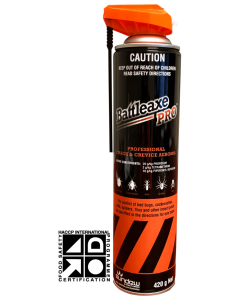 Battleaxe Pro Aerosol 420g20g/kg propoxur, 2g/kg tetramethrin, 10g/kg piperonyl butoxide
Battleaxe Pro Aerosol 420g20g/kg propoxur, 2g/kg tetramethrin, 10g/kg piperonyl butoxideBattleaxe PRO Professional Crack & Crevice is an aerosol formulation containing both long lasting and vapour-acting knockdown components.
-
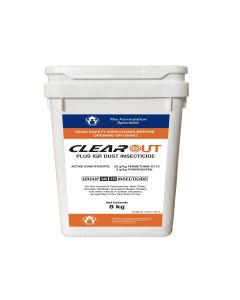 Clear Out Plus IGR Dust Insecticide 8kg Bucket20g/kg Permethrin, 2g/kg Pyriproxyfen
Clear Out Plus IGR Dust Insecticide 8kg Bucket20g/kg Permethrin, 2g/kg PyriproxyfenClearOut Plus IGR Dust Insecticide is a dual active dustable powder containing Permethrin and Pyriproxyfen for the control of adult and juvenile insects. ClearOut Plus IGR Dust Insecticide is formulated as a light, dustable powder featuring two modes of action in one application to provide a quick knockdown combined with a juvenile insect hormone regulator to stop the breeding life cycle.
-
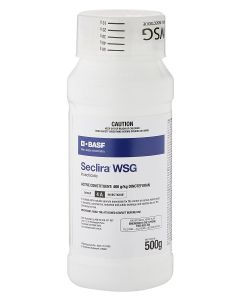 Seclira WSG Insecticide400g/kg Dinotefuran
Seclira WSG Insecticide400g/kg DinotefuranSeclira® WSG insecticide is a non-staining, odourless, broad spectrum, general insect control product for indoor and outdoor use.
-
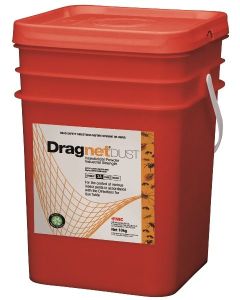 Dragnet Dust Insecticidal Powder2% Permethrin
Dragnet Dust Insecticidal Powder2% PermethrinDragnet Dust Insecticidal Powder is a 2% permethrin, broad-spectrum insecticide dust designed to reach into limited access areas. Dragnet Dust's super-fine formulation gives excellent coverage and spread. It is registered for the control of ants, spiders, fleas, cockroaches, silverfish, bed bugs, wasps, and bird mites in domestic, institutional & industrial premises. Also for the control of hide beetles, mushroom, sciarid flies and Potato moths.
-
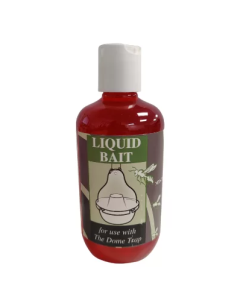 Agrisense Liquid Lure Bait 250mL
Agrisense Liquid Lure Bait 250mLAgrisense Liquid Lure Bait is a non-toxic specially formulated liquid bait that is particularly attractive to European Wasp & some species of Paper Wasps. It is designed for use in a fly and wasp trap.
-
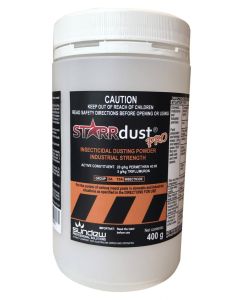 Starrdust PRO One-Shot Insecticidal Dust 400g20g/kg Permethrin, 5g/kg Triflumuron
Starrdust PRO One-Shot Insecticidal Dust 400g20g/kg Permethrin, 5g/kg TriflumuronThe Starrdust PRO One-Shot Insecticidal Dust 400g is an industrial-strength dust designed for use with the Starrdust PRO Duckbill Duster. It is a ready-to-use broad-spectrum insecticide with a unique formulation. It controls a wide range of insect pests including cockroaches, silverfish, spiders, ants, fleas, carpet beetles, bed bugs, European wasps, feral honey bees, bird mites, subterranean termites, hide beetles, millipedes, woodlice and clothes moths.
-
 Starrdust PRO One-Shot Insecticidal Dust 19 x 400g + Duckbill20g/kg Permethrin, 5g/kg Triflumuron
Starrdust PRO One-Shot Insecticidal Dust 19 x 400g + Duckbill20g/kg Permethrin, 5g/kg TriflumuronA convenient kit of 19 x Starrdust PRO One-Shot Insecticidal Dust 400g Pods and a bonus Duckbill Duster. StarrDust PRO is an industrial-strength dust designed for use with the Starrdust PRO Duckbill Duster. It is a ready-to-use broad-spectrum insecticide with a unique formulation. It controls a wide range of insect pests including cockroaches, silverfish, spiders, ants, fleas, carpet beetles, bed bugs, European wasps, feral honey bees, bird mites, subterranean termites, hide beetles, millipedes, woodlice and clothes moths.
-
 Taser Pro 800 WP Insecticide800g/L Bendiocarb
Taser Pro 800 WP Insecticide800g/L BendiocarbTaser Pro Insecticide is a residual broad spectrum non-repellent spray for the control of a wide range of insect pests in domestic, farm, agricultural, industrial, commercial and public service buildings.
-
 Starrdust PRO Insecticidal Dust20g/kg Permethrin 40:60, 5g/kg Triflumuron
Starrdust PRO Insecticidal Dust20g/kg Permethrin 40:60, 5g/kg TriflumuronStarrdust PRO Insecticidal Dust is a ready-to-use, broad spectrum insecticide with a unique formulation. It controls a wide range of insect pests including cockroaches, silverfish, spiders, ants, fleas, carpet beetles, bed bugs, European wasps, feral honey bees, bird mites, subterranean termites, hide beetles, and 3 new pests not on any dust product in Australia – millipedes, woodlice and clothes moths.
-
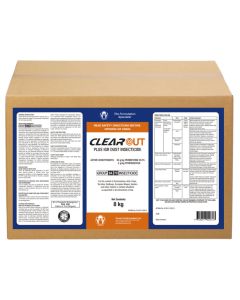 Clear Out Plus IGR Dust Insecticide 8kg Carton20g/kg Permethrin, 2g/kg Pyriproxyfen
Clear Out Plus IGR Dust Insecticide 8kg Carton20g/kg Permethrin, 2g/kg PyriproxyfenClearOut Plus IGR Dust Insecticide is a dual active dustable powder containing Permethrin and Pyriproxyfen for the control of adult and juvenile insects.
-
 Clear Out IGR Dust Insecticide Pods (11 Pods x 350g)20g/kg Permethrin, 2g/kg Pyriproxyfen
Clear Out IGR Dust Insecticide Pods (11 Pods x 350g)20g/kg Permethrin, 2g/kg PyriproxyfenClearOut IGR Dust Insecticide Pods bring the proven performance of ClearOut Plus IGR Insecticide Dust into a compact, easy-to-use 350g pod. Designed for professional pest controllers, these pods eliminate the hassle of decanting — simply screw your duster directly onto the pod using the adaptor and start applying.
JOIN OUR NEWSLETTER NOW!
Be the first to hear about the latest specials, products, tips and ideas.

